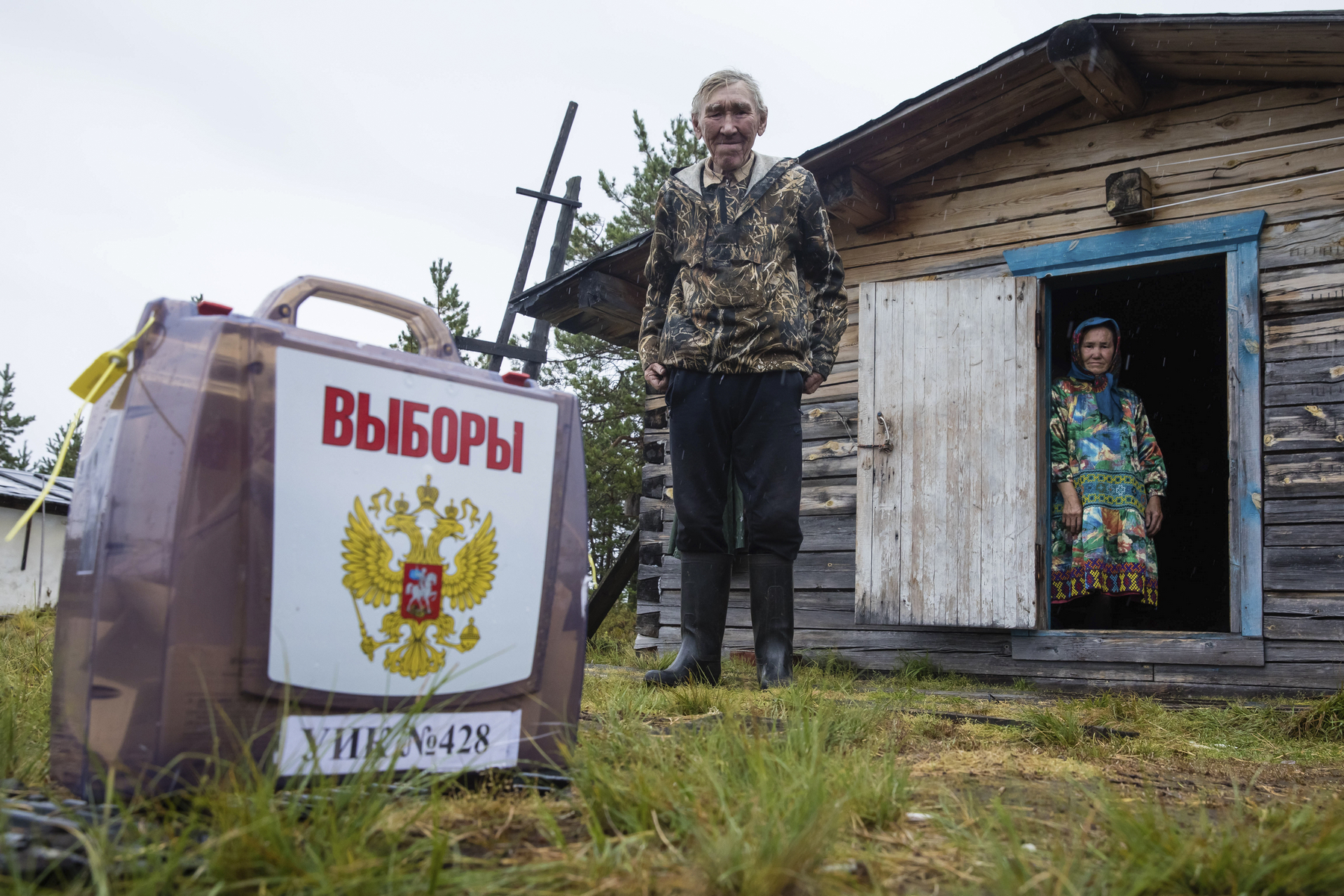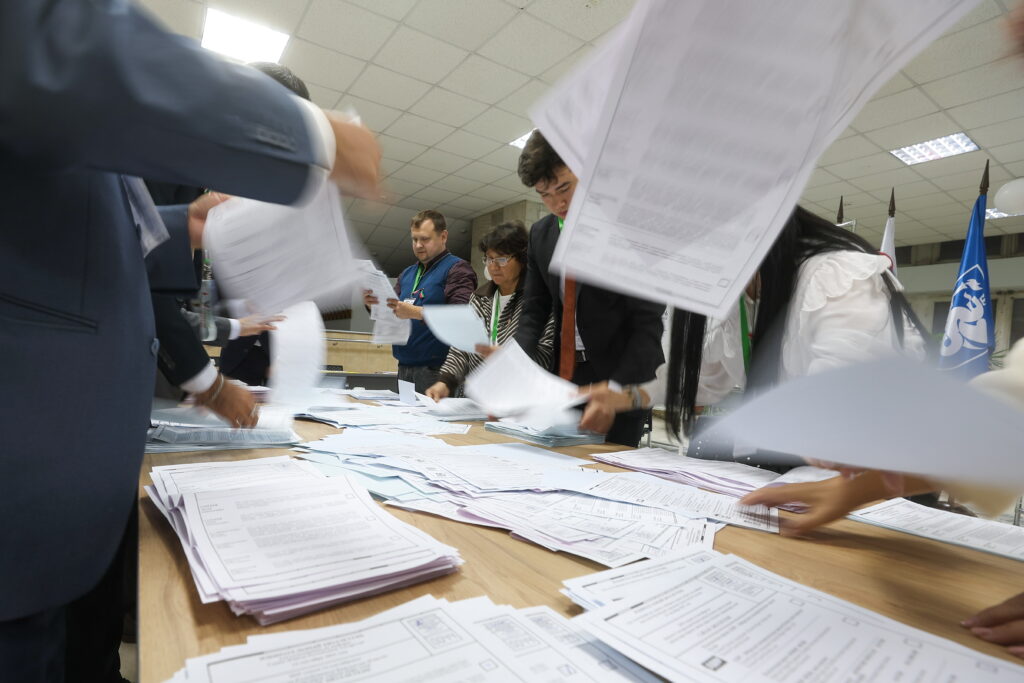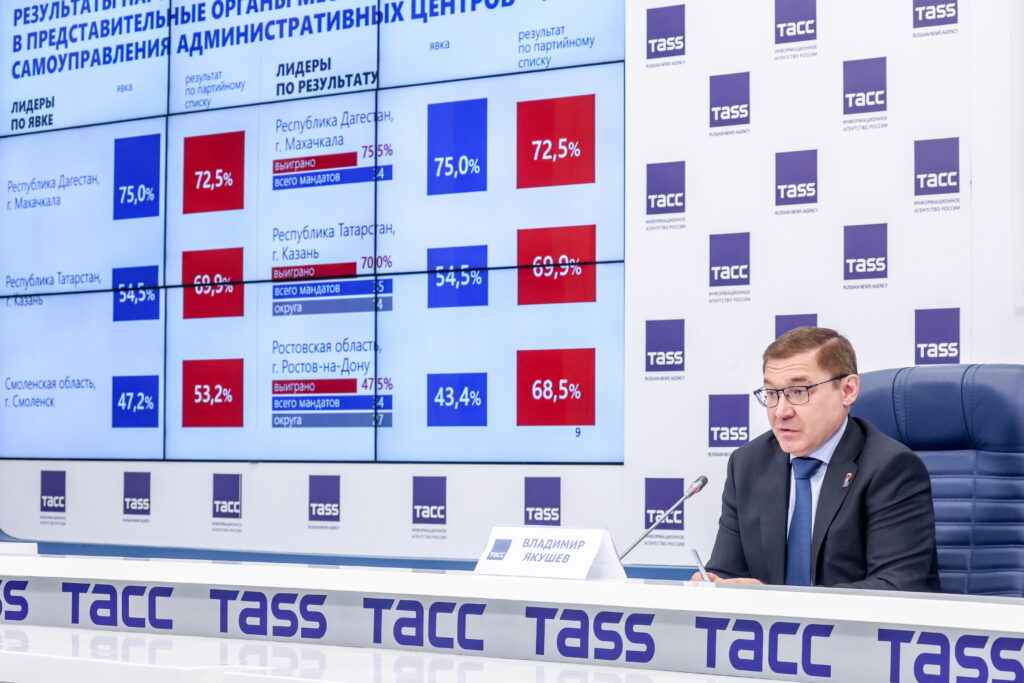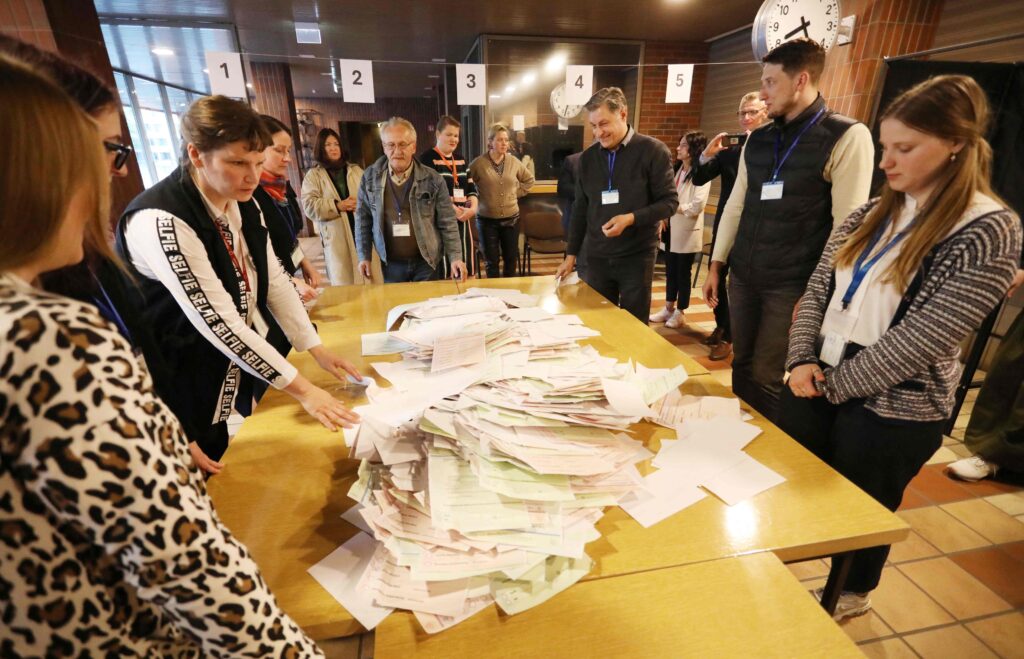People who study electoral technologies are often asked: What kinds of technologies should be introduced in Russia in the future to avoid falsifications? However, a more important question to be asked is: How can technologies help to avoid falsifications? In fact, technology cannot be seen as a magic pill to cure all the problems of young democracies. The effect of technology on democratic ideals depends largely on how it is implemented. For this very reason, the same technologies can be used either for the benefit or to the detriment of democratic values. For instance, let us consider the different ways of using electronic voting in democratic and non-democratic countries. One of the most striking metaphors about technology is that it works like a flavour enhancer: if technology is applied in an authoritarian environment and with authoritarian intentions, it will only reinforce authoritarian tendencies. And vice versa.
Russia has extensive experience of applying a variety of electoral technologies. The automation of electoral processes began in the mid-1990s and early 2000s. The Electoral Technologies Training Centre was established under the Central Election Commission (CEC), the law “On the ‘Elections’ State-run Automated System of the Russian Federation” was adopted, and the first voting machines came into use (for example, ballot processing set-ups and touch-screen voting machines). Moreover, at various times Russia tested floppy disk-, radio- and satellite-based voting, tele-voting and even online voting, and all this happened well in advance of the 2019 Moscow City Duma elections.
Considerable attention paid to electoral technologies in Russia is not surprising. Elections are among the most logistically complex activities undertaken by any country, especially one that is as large as Russia. On election day, the state has to provide its citizens with the opportunity to vote simultaneously. No other public service reaches such a high peak of activity. At the same time, it is entirely reasonable to assume that technology can be used for purposes other than simplifying the electoral process. For example, the international scholarly community sees the use of electronic voting to elect members of the Public Chamber and other advisory bodies since 2012 as a successful attempt “to convey the image of a transparent, accountable and responsive government to the general public,” targeted against opposition activists.
One common misconception relates to the “objectivity” of technology. This imagery involves a clear division into “bad” and “good” technologies. “Bad” technologies are thought to aggravate the existing problems whereas “good” ones solve all existing problems without much effort. The majority of the previously used technologies turn out to belong to the former group since implementation problems are inevitable. In contrast, new technologies, not previously used for a particular task (e.g. to combat falsification), are shrouded in a veil of high expectations. One prime example of such technology is blockchain. The main argument used by its proponents boils down to the following: “Data in blockchain […] are encrypted and anonymised. As a result, they cannot be altered or deleted, which means that there is no way of tampering with the results.” Practitioners and academics alike hold the view that all implementation problems can be avoided only by changing the type of technology used. However, they tend to ignore the fact that the approach to implementation and use of technologies remains unchanged.
Russia’s experience demonstrates that there is little difference between using high-tech or more accessible technologies to combat fraud: neither the blockchain recording of all electronic votes during the experiments on electronic voting in Moscow in 2019, nor the long-standing practice of using video surveillance to monitor elections at each polling station has solved the problem of fraud. The underlying reason is that either the use of technology was not transparent or it did not improve the transparency of the electoral system. One simple example shows how specific characteristics of technology, aimed at increasing transparency, can lead to the opposite result: video cameras installed at polling stations were simply covered by external objects.
No technology, no matter how innovative, can rule out falsifications completely. Non‑systemic fraud and fraud attempts are part of the electoral process even in the most advanced democracies (one recent example is an attempt at non-systemic fraud in Switzerland). Instead, the goal of technology is to make fraud more visible and easier to detect, thus greatly limiting the opportunities for fraud. New technologies in the electoral process can indeed help to introduce new monitoring tools that were not previously possible. For instance, some online voting systems allow voters to check if their vote was counted in the same form in which it was cast, i.e. if a citizen voted for candidate A, this is how that vote was counted. This level of control is impossible for most paper-based voting systems because paper ballots must bear no marks other than the voter’s choice. If a voter tries to make the ballot identifiable in some way (by using a signature or a drawing) to be sure that this specific vote was counted during the observation of manual vote counting, such a ballot becomes invalid. Thus, unlike paper ballots, some electoral technologies allow voters to track the fate of a specific ballot even after it has been placed in the ballot box. However, the success of this endeavour depends on how competently such sophisticated election technologies have been designed and implemented. The global practice already knows unsuccessful examples of introducing this additional monitoring mechanism.
What can help us to answer the question about the role of technology in avoiding falsification? First of all, we should identify the purpose of technology. As early as the 1950s, in his reflections on technology, Martin Heidegger identified two overarching purposes of technology: to illuminate/reveal and to ensure efficiency. Nowadays, scholars who invoke these rules in the context of elections speak of transparency/openness and efficiency. In fact, these two goals are often in conflict: the requirements of efficiency contradict the requirements of full transparency because the latter calls for major financial expenditure. However, in dealing with falsification, the issue of transparency and openness is more significant than efficiency. At the same time, it is extremely important to ensure transparency at all stages when implementing electoral technologies: from the moment when a specific problem is identified (on this basis, clear requirements for technology are developed) to the post-election audit of the technology that has been employed. This is exactly why Switzerland temporarily suspended e-voting after more than 10 years of piloting it (in more than 300 elections since 2004): the use of this technology is being thoroughly reviewed. The revision aims to develop a system that is fully verifiable, effectively controlled and monitored, in particular by enhancing the transparency of the technology and increasing trust: not in the government, but in the technology.
In developed democracies, technology is not used to build trust in the electoral process. This is a significant difference between developed and new democracies when we look at the expectations attached to the transparency of technology. When a technology is introduced, developed democracies already have a fairly high level of trust in the electoral process, one reason being that the electoral process has been made comprehensible and transparent. Therefore, the task of technology is not to increase trust in the electoral process, but rather to ensure that this trust is not inadvertently undermined and the transparency of the electoral process is not compromised. For example, after the first tests of electronic voting machines at polling stations, the German Constitutional Court ruled that technology can be used in the electoral process only if the process is understood by all citizens, even those without any special technical knowledge. This view means that technology should not turn a well-established and understandable electoral process into a black box. The ruling is certainly in favour of more transparent technologies, if not simpler ones.
Since there is a link between electoral technologies and citizens’ trust in the electoral process, it becomes more important to look at how technology is applied rather than which specific technology is used. The experience of Western countries has shown that the lack of transparency in the application of electoral technologies may entail more than falsifications. Where there is no public understanding of how a specific technology works, it is easier to spread misinformation about its use, thereby undermining citizens’ confidence in the electoral process as a whole. This kind of situation was observed, for example, in the 2018 elections in Mexico, where misinformation was targeted against the electoral commission’s contracts with private companies responsible for protecting elections from hacking attacks. According to the misinformation which was disseminated then, private companies allegedly gained control over all official electronic systems used for administering the election. It is easy to imagine that such misinformation schemes may be used in any other country since the content of contracts is usually classified to protect the commercial interests of technology companies. Consequently, lack of transparency paves the way for all kinds of rumours. Another example is the U.S. presidential election in 2020, when a Russian-language news portal published information about voter data in Michigan being leaked to the Internet. The news was soon shared by major media outlets such as Kommersant and Meduza (Meduza apologised to its readers later). In fact, those data were always accessible. When commenting on that episode, one cybersecurity expert said that “misinformation is a greater threat to voter confidence than technical vulnerabilities in any technology.”
Another important question is: Who will implement the technology? A corrupt government will exploit any technological innovations, including the most advanced ones, to achieve its goals pursuing the desire to stay in power and to gain economic benefit through the implementation of expensive technologies. The use of state-of-the-art technology is very common in African countries: for example, voter identification in the unrecognised Republic of Somaliland is done through iris scanning. However, the use of electoral technology in many African countries has been accompanied by corruption scandals: for example, a Belgian company that provided electoral technology to the Democratic Republic of Congo in 2011 was sued for corruption.
However, even without a corrupt government there is no guarantee that technology will serve the public good. The experience of both democratic and non-democratic countries has shown that the introduction of technology in the electoral process entails the participation of private companies. Following the reforms of central and regional government, as well as for other reasons, governments often lack the capacity to develop electoral technologies themselves or the expertise to define clear specifications for such technologies. Public authorities may simply have no relevant specialists at hand. As a result, governments turn to the private sector to develop and implement electoral technologies. However, the private sector attaches more importance to efficiency over transparency. At the same time, the principles of protecting the commercial interests of private companies allow them to significantly limit the possibilities for monitoring and controlling the implementation of technologies.
For these reasons, there has been a growing number of crowdsourcing initiatives around the world (funded and/or developed by a wide range of individuals) aimed at combating fraud. One of the most prominent examples is the parallel vote-counting initiative in Indonesia called Kawal Pemilu. This initiative was made possible because the Indonesian Election Commission began to publish the vote count reports from each polling station. Kawal Pemilu volunteers check the reports in real time and conduct a parallel vote count.
Russia is also at the forefront of using technology for election observation through crowdsourcing: during every election, volunteers analyse tally sheets with vote counts from every single polling station because, as in Indonesia, such reports are published in the public domain. The Golos project and the work undertaken by Sergey Shpilkin deserve special attention here. Even if such initiatives fail to fully implement their ideas in today’s realities, the experience of non-profit organisations that develop and implement technologies is an excellent foundation for the future.
To recap, the use of technology during elections should be transparent and open to scrutiny and observation, and it should also ensure greater transparency of the electoral process. Transparency and accountability of the electoral process are the main guarantees that falsifications will be noticed and stopped. Therefore, the actual technologies to be used are less important than other considerations: the way they are implemented, the purposes they serve and the entities who have been granted access to monitor all steps involving the use of technologies. As a specific recipe for potential reform, I suggest taking a simple technology that has been used previously, such as video surveillance at polling stations, and run a thorough review of its use. The following steps should be taken:
- Identify the reasons why the technology has been used. Should it only enable surveillance or does it enable liability for violations detected during video surveillance? At the moment, video recordings of falsifications cannot be easily used in court because “law enforcement agencies do not recognise unofficial recordings, and it is extremely difficult to get access to official ones.”
- Explore the practice of introducing the technology in question: sanctions and a supervisory body that ensures that cameras will work smoothly at all polling stations and will not be obstructed by external objects;
- Ensure that all participants in the process have access to all stages of technology use. This means that they should be able to monitor the signal transmitted by cameras on election day, but also the process of camera purchase and installation, development of the web portal which receives the stream of signal from all cameras, development of the supporting mechanisms to enable automatic detection of falsifications, for example by using artificial intelligence rather than by manually watching and reviewing all recorded video footage.
*This article is part of the ‘Reforms’ series prepared by Riddle in partnership with Reforum project.










